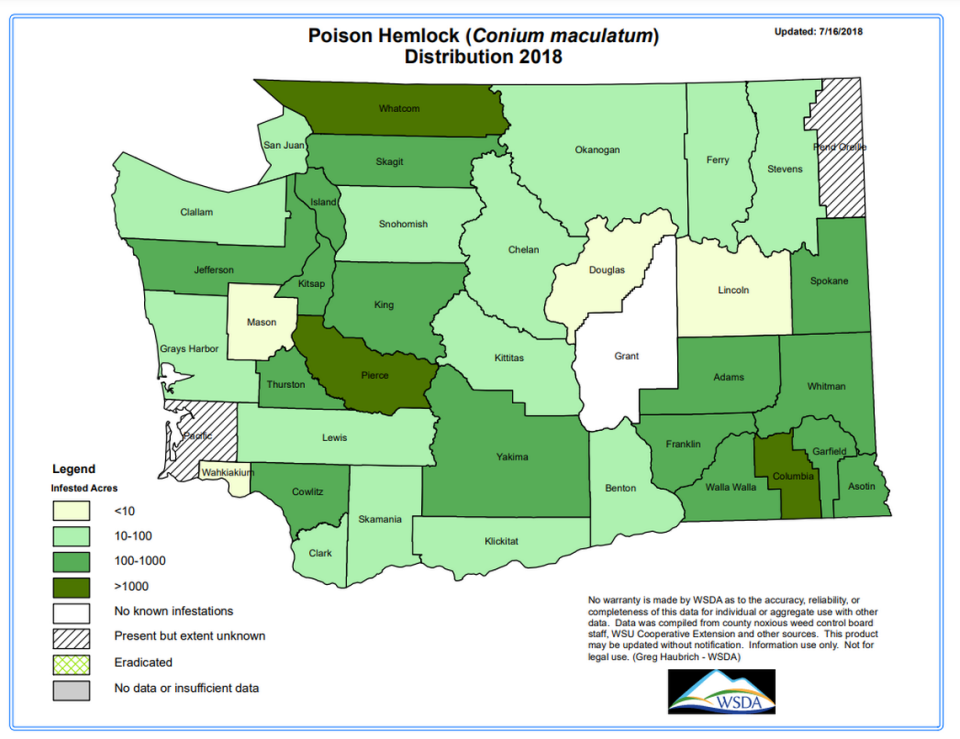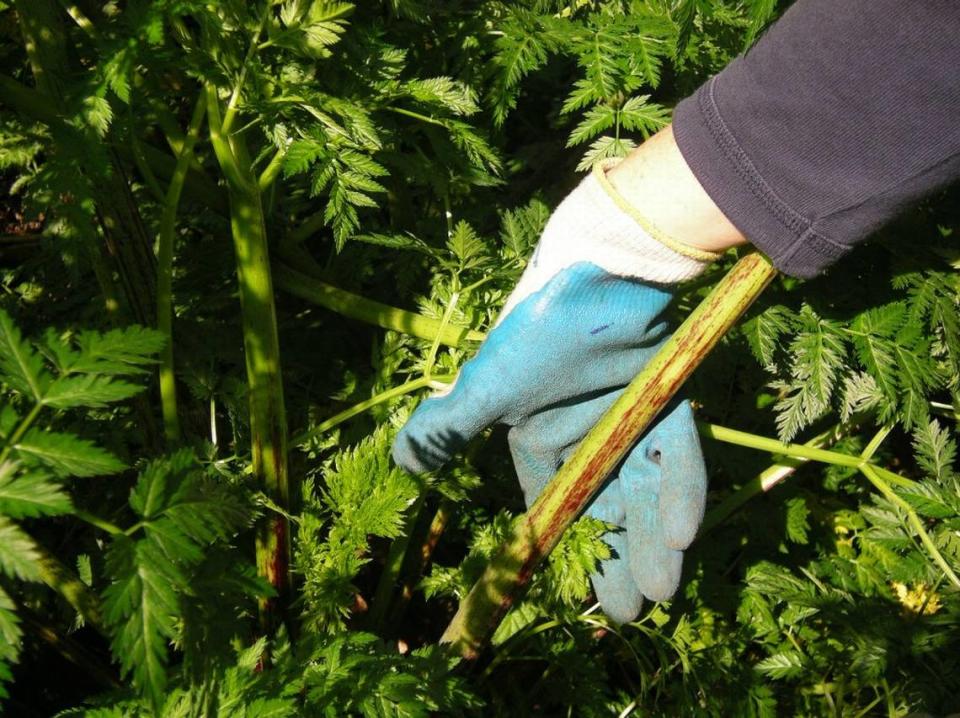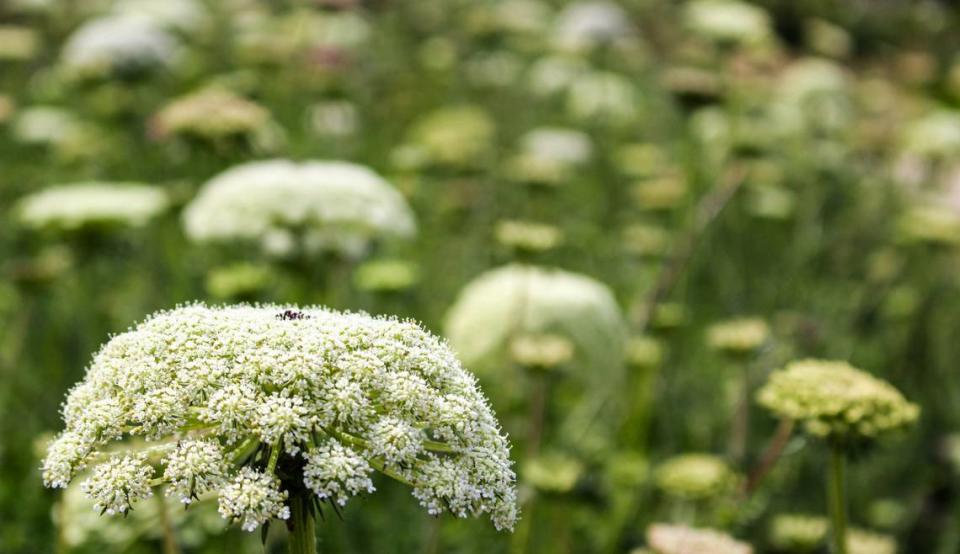Poison hemlock grows across Washington state. Here’s how to identify the deadly plant
Washington weather is once again allowing for yard work and exploring the wilderness, but outdoor enthusiasts should be prepared for potential threats. That’s especially true when it comes to identifying and avoiding toxic plants.
Chief among those is deadly hemlock. Easily confused with other, non-poisonous plants, hemlock grows all across the state and prefers rich, moist soil. It also grows across the U.S. In Washington state, the gangly invasive weed is often mistaken for Queen Anne’s Lace, wild carrot or cow parsley.
The plant’s discovery can trigger a public response, as state law requires that it be removed. Hemlock found in a Pierce County park last month forced a Fort Steilacoom dog park to be temporarily closed.
In fact, Pierce County is one of three counties in the state most impacted by poison hemlock, alongside Whatcom and Columbia counties according to a statewide distribution map from the Washington State Noxious Weed Control Board.

Here’s what to know about this toxic plant.
What is poison hemlock?
Poison hemlock is a stout, erect plant with a center stalk and light green stems and fern-like leaves that can grow up to 12 feet tall in Washington state’s temperate climate and rich volcanic soil. It has umbrella-shaped clusters of white flowers with 12-15 flowers with five petals.
The Pierce County Noxious Weed Control Board notes that poison hemlock can be found on roadsides, edges of cultivated fields, waste areas and vacant lots. They also like open, sunny fields, and can be confused with wild carrot or parsnip, especially when the plant is young. The stems have splotchy purplish markings.

All parts of the plant are extremely poisonous.
Poisoning can happen in humans from inhaling the plant’s fumes or through skin contact. Humans can also die in two hours if six to eight leaves are ingested. It was even used to poison prisoners as a form of execution in ancient Greece, including Socrates.
The plant is also toxic for animals, including cats, dogs and horses. But experts say it isn’t likely small animals will eat enough hemlock to experience severe poisoning. Regardless, if you think your pet ate poison hemlock, call the Pet Poison Helpline at 855-764-7661.

What plants look like hemlock?
Poison hemlock is often confused with many plants. Here’s what you should know about those lookalikes.
Queen Anne’s Lace/wild carrot: Edible and medicinal. Grows shorter than hemlock. Stem has hairs, unlike hemlock’s smooth stem.
Yarrow: Edible and medicinal. Grows shorter than hemlock. Distinct frilly leaves.
Wild fennel: Edible. Flowers are yellow instead of white. Entire plant smells like anise or licorice.
Elderflower: Edible flower blossoms. Leaves will branch off in exact opposites, where hemlock leaves alternate.
Cow parsley: Edible. Grows shorter than hemlock. Stems are ridged, not smooth like hemlock, and hairs grow on underside of leaves.
What should I do if I touch hemlock?
The Centers for Disease Control and Prevention outlines the following steps if you touch a poisonous plant like hemlock.
Rinse immediately with rubbing alcohol, poison plant washes or dishwashing soap and plenty of water. Scrub under nails.
Apply wet compresses, calamine lotion or hydrocortisone cream to the skin to reduce itching and blistering.
Take an antihistamine like Benadryl to help relieve itching.
Get medical help in severe cases, or if the rash is on the face or genitals.
Call 911 or go to a hospital emergency room if you have a severe reaction, such as swelling or difficulty breathing.
What do I do with hemlock plants?
If you find poison hemlock in Washington state, you are asked to report it. Your county may even require specific action. This is because hemlock is classified as a Class B noxious weed in the state, which is “strongly encouraged” by the Weed Control Board for removal. If it’s on your property, you should remove it.
Different counties have different protocols for the discovery of poison hemlock. Check with your county officials if you’re unsure.
Pierce County Noxious Weed Control Board reports can be made by calling 253-798-7263
Whatcom County Noxious Weed Board takes reports at 360-778-6234
Columbia County Weed Board can be reached at 509-382-9760
If you found a small patch of hemlock on your land, use protective clothing and gloves to dig up the plant, including its taproot. Use herbicides for larger occurrences.

